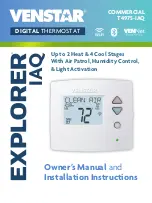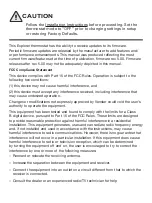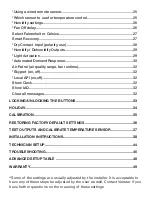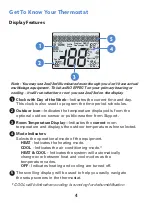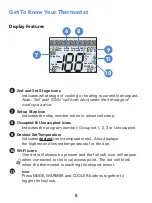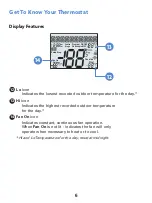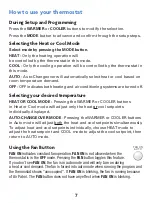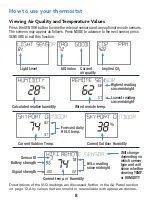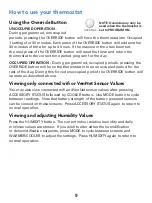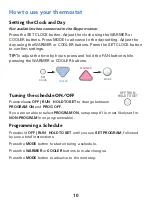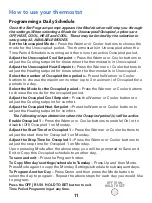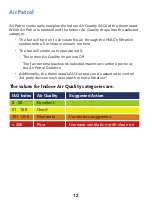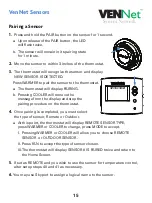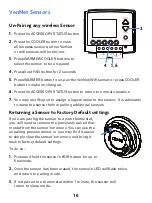
1
Glossary of Terms
Air Patrol:
Feature that turns on the fan when measured air quality is below
what is desired.
Auto-Changeover:
A mode in which the thermostat will turn on the heating or
cooling based on room temperature demand.
Cool Setpoint:
The warmest temperature that the space should rise to before
cooling is turned on (without regard to deadband).
Deadband:
The number of degrees the thermostat will wait, once a setpoint
has been reached, before energizing heating or cooling.
Dehumidify:
To reduce the amount of moisture in the air.
Differential:
The forced temperature difference between the heat setpoint and
the cool setpoint.
Heat Setpoint:
The coolest temperature that the space should drop to before
heating is turned on (without regard to deadband).
Humidify:
To increase the amount of moisture in the air.
Icon:
The word or symbol that appears on the thermostat display.
Mode:
The current operating condition of the thermostat (i.e. Off, Heat, Cool,
Auto).
Non-Programmable Thermostat:
A thermostat that does not have the
capability of running Time Period Programming.
Override:
During programmed unoccupied periods, pressing the Override
button will force the thermostat into occupied settings. During programmed
occupied periods, pressing the Override button will force the thermostat
into unoccupied settings.
Programmable Thermostat:
A thermostat that has the capability of running
Time Period Programming.
Reheat:
Running the cooling and 2nd stage strip heaters at the same time
in order to dehumidify the air without significantly cooling down the room
temperature.
Temperature Swing:
Same as Deadband.
Time Period Programming:
A program that allows the thermostat to
automatically adjust the heat setpoint and/or the cool setpoint based on the
time of the day.

